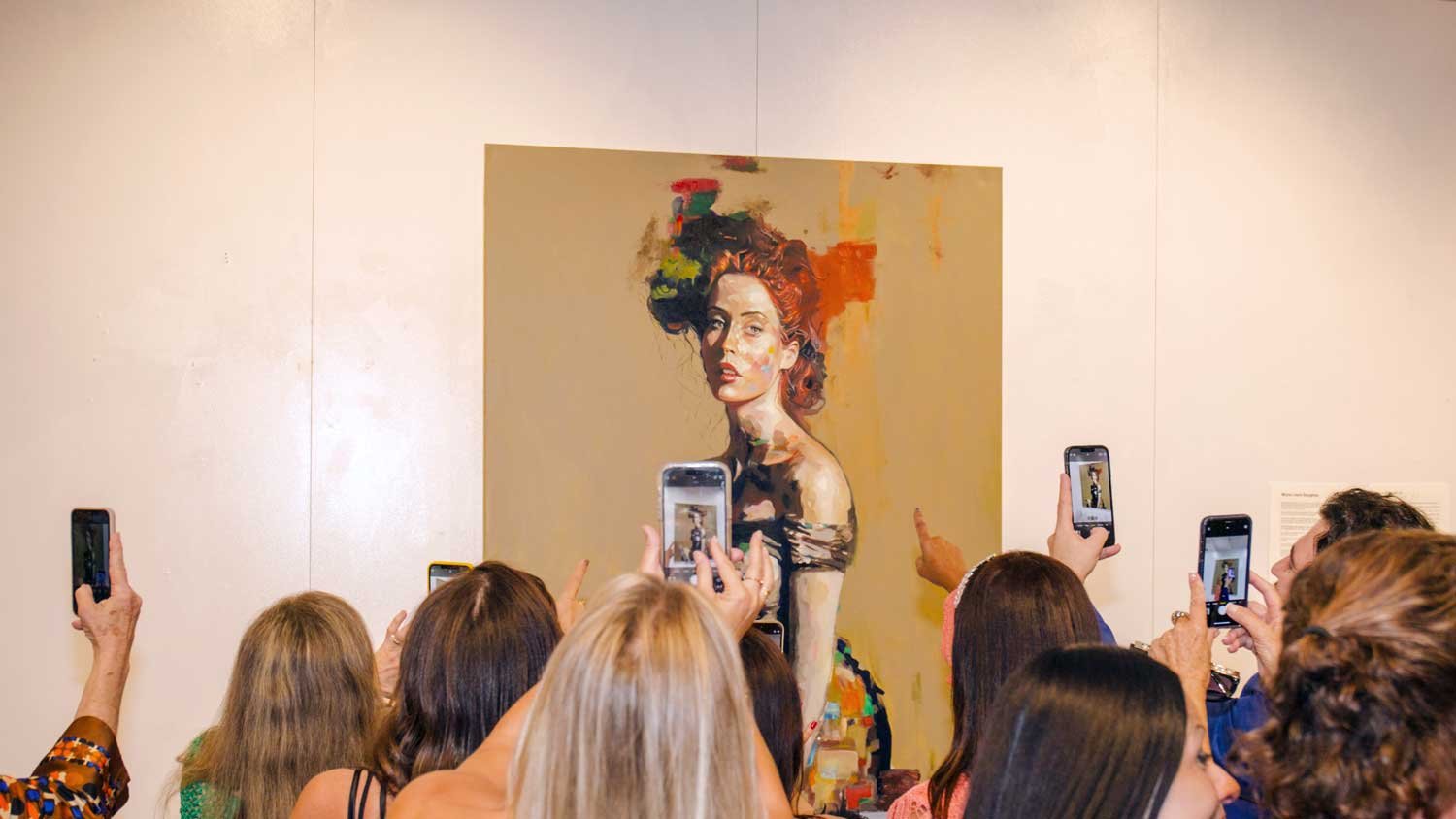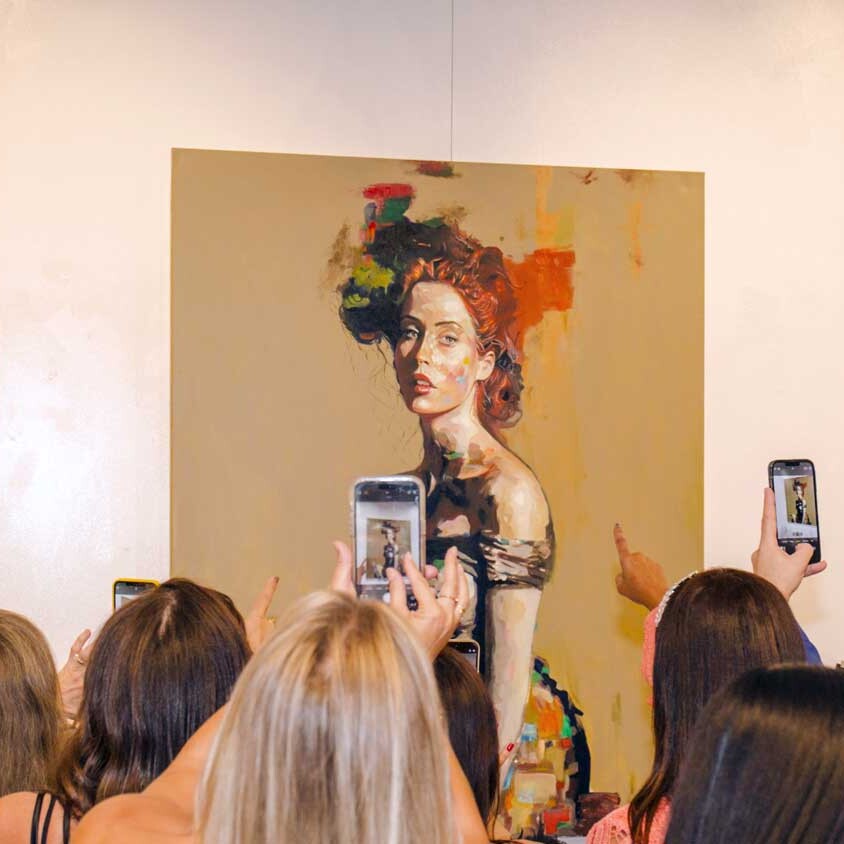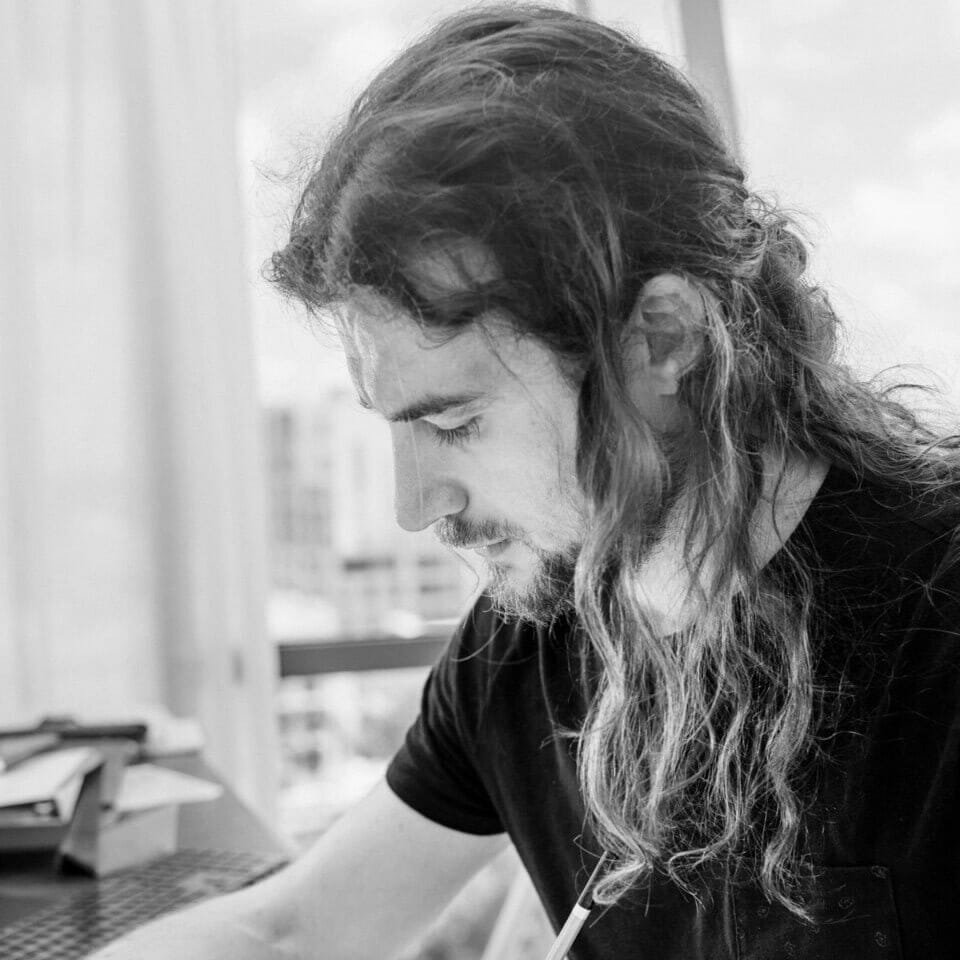The Mona Lisa’s Daughter is a painting created in 2023 by the artist Alex Righetto. It aims to explore themes related to Italy and the Renaissance.
Through thorough research, Alex discovered that Lisa Del Giocondo, who is believed to be the subject of Leonardo da Vinci’s portrait, lost a daughter at birth.
This painting reimagines the world’s perhaps most famous artwork, the Mona Lisa, by proposing the idea of representing what the daughter might have looked like had she survived.
Weaving Time: Past Meets Present
With this canvas, the artist Alex Righetto intertwines the threads of time, presenting an alternative narrative: a conjectural portrayal of what Lisa’s daughter’s life might have held.
Righetto’s work transcends mere speculation about her appearance, delving into the essence of what her life could have signified, thus weaving the threads of an existence reclaimed from time.
Echoes of the “Mona Lisa”
This work is more than a tribute; it’s a visual dialogue that resonates with timeless inquiries about life, art, and the cultural inheritance we carry forward.
An Atlas of the Human Condition
Like a cartographer of the soul, Righetto uses “The Mona Lisa’s Daughter” to map the enduring yet ephemeral nature of humanity, where each life is interwoven with others in an eternal tapestry.
With “The Mona Lisa’s Daughter”, Righetto opens a portal to a realm where art gives form and voice to the narratives hitherto silent, symbolizing a renaissance that is both deeply personal and expansively collective.
The artist’s words:
“Many people have become curious about the painting ‘The Mona Lisa’s Daughter.’
This artwork, along with others, was born from the idea of exploring one of the most extraordinary artistic periods of all time, the Renaissance.
One of the most famous paintings in the world is a fruit of that period: Leonardo da Vinci’s Mona Lisa.
During my research on the subject, I was intrigued to discover that Lisa del Giocondo (the subject of the painting) had a stillborn daughter.
I began to explore the idea of depicting the daughter as if she were still alive.
What expression would she have today? The result was a painting that is like a still life, a kind of ‘memento mori’, an emblem of human transience.
A symbol of life and death, represented by an expressive technique that shows extremely lively features of the daughter, like her face, and others where she is clearly a corpse.
A yin and yang, a dichotomy of elements that characterize existence:
light and dark, good and evil, life and death… The painting is not for sale. In fact, I have turned down a considerable offer for it.”
Alex Righetto




